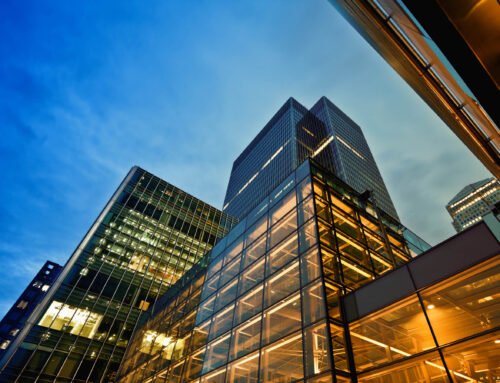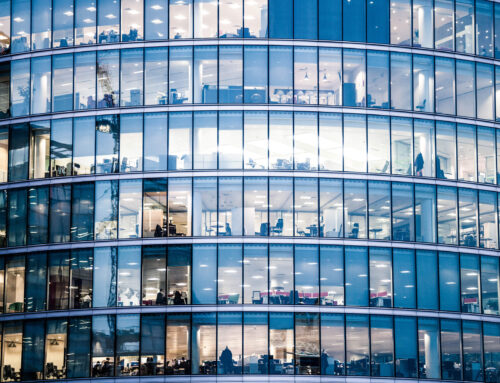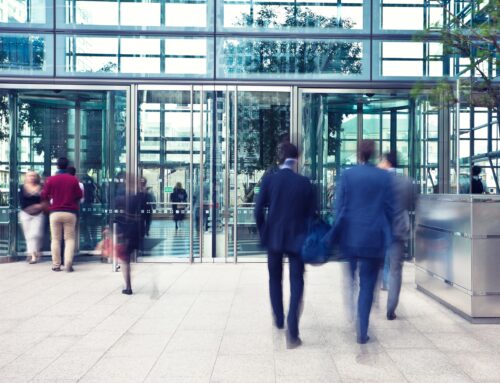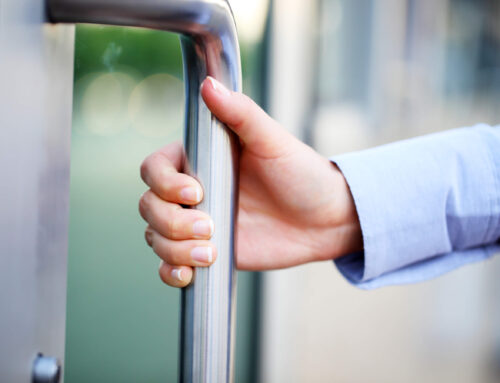Elevator Access Control: Everything You Need To Know
For high-rise buildings, such as condos and office towers, elevators are the primary pathway used to travel throughout the building. This makes them extremely important in preventing unwanted guests from accessing sensitive areas. A well-secured elevator will prevent undesired travel across floors of the building.
Connecting a fob access system to your elevators is the most effective and secure way to control the movement of unwanted guests in your building. This allows you to control who has access to which (if any) floors, in a similar way that you would control a door.
Despite this, elevator security is often a complicated topic for building owners and managers as it requires involvement from two trades: your elevator service company and a security company.
There are also multiple options in how this can be implemented, with exponentially different costs depending on the level of security needed.
This brief guide will show the complications involved with elevator security, including a breakdown of which trade is responsible for providing what, and what the differing security level options are.
Who Provides What?
As mentioned, if you are looking to increase the security of your elevators, you will need to involve both your security and elevator company.
The Elevator Company is responsible for:
- Modifying elevator buttons to allow for a relay to be installed (the security company will then handle installing said relay).
- Providing a cabled connection from the new card reader in the elevator cab to the elevator machine room. Often, there will be spare cables available to use in the elevator travel cable bundle. If this is not the case, then a new travel cable will need to be run. Your elevator company should be able to confirm if there are spare cables that can be designated for the fob system.
The Security Company is responsible for:
- Installing the prior mentioned relay. The relay will allow the button only to work when an access card or fob is provided.
- Installing the new card reader for the elevator.
- Installing expanders that allow the existing card access system to control the elevator floors.
- Wiring the card access equipment to the elevator machine room.
- Programming the access levels and floor levels to be assigned.
- Integrating the building’s visitor entry systems so that guests are able to visit residents’ floors when they have the correct permission.
Comparison of Methods:
There are also several levels of security available for elevators (in terms of strictness). The cost difference between them can be exponential, so it is essential to understand what you need and install accordingly. The following section will break down how each grade works, and its pros and cons.
-
All Floors Unlock:
As the name suggests, once a valid card or fob is provided, all floors will become unlocked. This set up is the easiest to implement but also the lowest security.
- Pros: Cheapest and easiest way to implement some form of elevator security.
- Cons: Everyone who has access has access to all floors. No way to track who goes where.
-
Floor By Floor:
In this configuration, each floor is controlled individually by the card access system. When you present a fob to the reader in the elevator, it only unlocks the floors that you are assigned.
- Pros: Guests and residents only have access to floors assigned to them. Effectively prevents unwanted guests from entering unapproved areas.
- Cons: No way to audit which floors were used by whom in the case of a problem.
-
Floor by Floor with Feedback:
Similar to floor by floor, this configuration has all the same benefits; however goes one step further. After pressing a floor selection button, this information is transmitted to the card access system. This allows the card access system to:
- Log which button you pushed
- Immediately deactivate all the other floors call buttons you had access to (this prevents other unauthorized individuals from tailgating onto another floor you activated)
Logging what floor, someone went to provides an audit trail as individuals travel through the building – the core functionality of card access systems – with the previous options, you would only know someone accessed the elevator, nothing else.
- Pros: Full control over who access to which floors. All other floors lock once a floor is used. Ability to track who went where.
- Cons: Most expensive and complicated to implement.
Alternative: Destination Dispatch
Destination dispatch elevators do not have any floor call buttons inside. While in the lobby, you select the floor you wish to go to, and the screen directs you to the correct elevator. This is great for busy buildings as the elevator system can efficiently group passengers heading to particular floors together, shortening wait times and more efficiently using the number of elevators available.
In Toronto today, destination dispatch is popular in taller high rise office towers, but we expect to see growth of destination dispatch elevators in residential condominiums in the future.
To secure these elevators, your security company would need to install a reader at each lobby call station. Presenting your card here will give you the ability to select secure floors.
In this case, the card access software and elevator controller software need to be integrated to communicate with one another at a software level. Most major card access manufactures have already written the integration to major elevator manufacturers, and with the appropriate software licenses, it can be deployed at your building. In other cases, the integration needs to be written from scratch more common with either lesser-known card access manufacturers or lesser known elevator manufacturers.
Which Method Is Best For Your Building?
This will of course depend on your security needs and available budget, plus whether you are using destination dispatch elevators or not.
Reach out to Square, and we are happy to further discuss your options and give an expert recommendation based on your building’s needs.
Schedule a free appointment here or call 416-460-7218 to get started!









